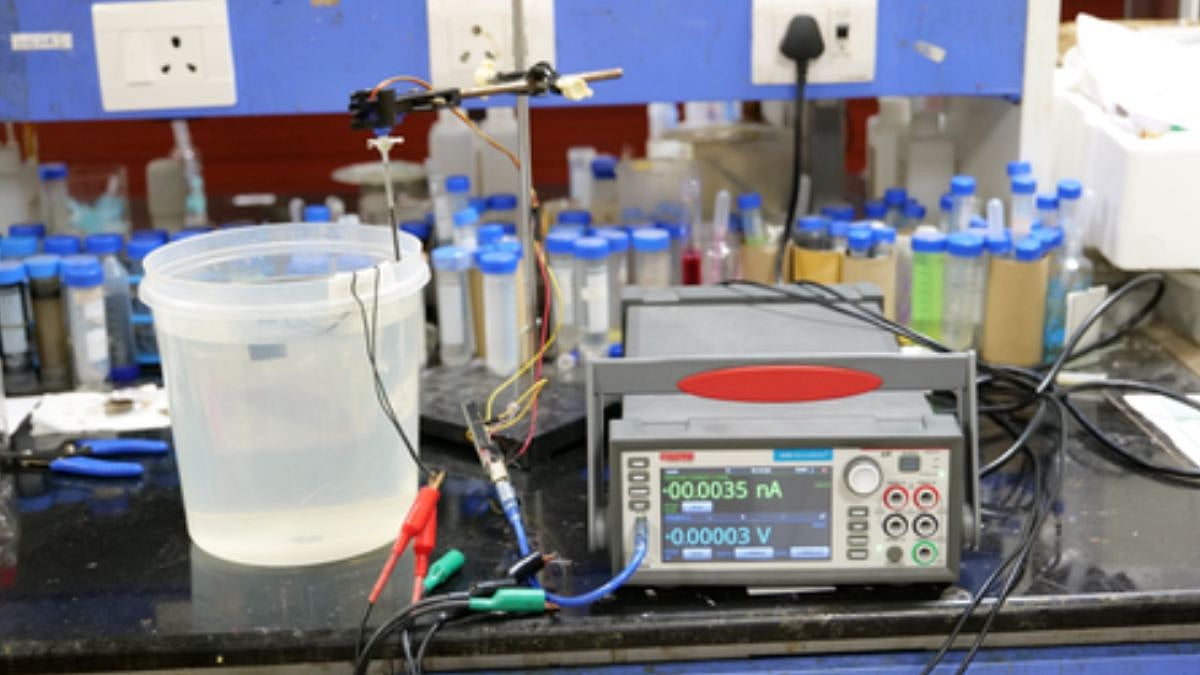IIT Guwahati's Deep Learning Sensor To Turn Exhaled Air From Mouth Into Voice Commands
Conducted in collaboration with researchers from Ohio State University, US, the novel sensor offers a promising alternative communication method for individuals with voice disabilities who are unable to use conventional voice-based systems.

IIT Guwahati's Deep Learning Sensor To Turn Exhaled Air From Mouth Into Voice Commands | IANS
New Delhi: A team of researchers at the Indian Institute of Technology (IIT) Guwahati has developed an underwater vibration sensor that enables automated and contactless voice recognition.
Conducted in collaboration with researchers from Ohio State University, US, the novel sensor offers a promising alternative communication method for individuals with voice disabilities who are unable to use conventional voice-based systems.
The research focused on the exhaled air through the mouth while speaking -- a basic physiological function.
In cases where individuals cannot produce sound, attempting to speak generates airflow from their lungs. When this air flows over a water surface, it produces subtle waves.
The underwater vibration sensor could detect these water waves and interpret speech signals without depending on audible voice, thus creating a new pathway for voice recognition, said the team, in the paper, published in the journal Advanced Functional Materials.
Prof. Uttam Manna's Statement
“It is one of the rare designs of material allowing the recognition of voice based on monitoring the water wave formed at the air/water interface because of exhaling air from the mouth. This approach is likely to provide a viable solution for communication with those individuals with partially or entirely damaged vocal cords,” said Prof. Uttam Manna, Department of Chemistry, IIT Guwahati.
The new sensor is made from a conductive, chemically reactive porous sponge.
When placed just below the air-water interface, it captures the tiny disturbances created by exhaled air and converts them into measurable electrical signals.
The research team used Convolutional Neural Networks (CNN) -- a type of deep learning model -- to accurately recognise these subtle signal patterns.
This setup allows users to communicate with devices from a distance, without the need to generate sound.
"On a lab scale, the working prototype costs Rs. 3,000," said the team, noting that they are exploring potential industry collaboration for bringing the technology from the lab to real-world use, which can reduce the cost.
ALSO READ
Other key features of the sensor include contactless communication for individuals with voice disabilities; AI-powered interpretation using CNNs; and hands-free control of smart devices.
Beyond voice recognition, the sensor can also be utilised for exercise tracking and movement detection. In addition, its proven durability, remaining stable after extended underwater use, suggests potential applications in underwater sensing and communication.
(Except for the headline, this article has not been edited by FPJ's editorial team and is auto-generated from an agency feed.)
Published on: Monday, August 04, 2025, 01:28 PM ISTRECENT STORIES
-
-
-
-
-